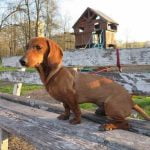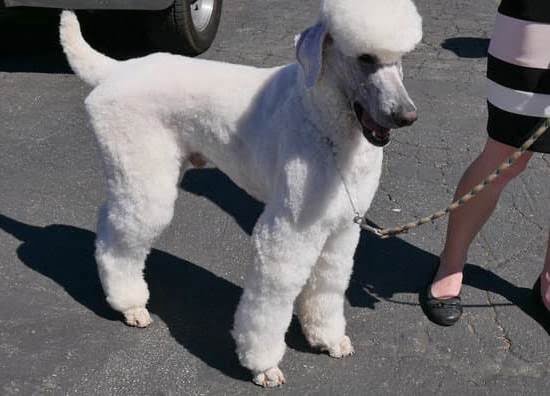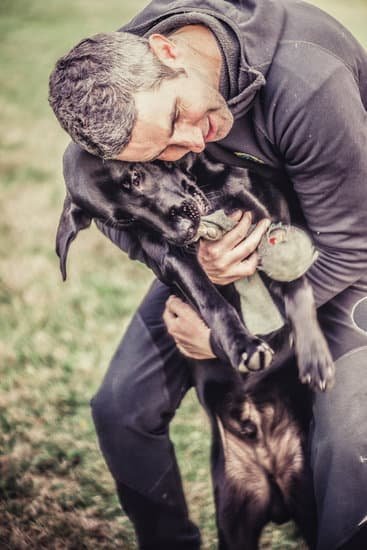Introduction
Pheasant hunting is an exciting and rewarding sport for experienced or novice hunters. It requires a variety of skill sets and techniques to be able to successfully hunt and retrieve pheasants. The most important part of successful pheasant hunting is having a well-trained dog. An obedient, well-trained gun dog can help you locate, track, point and retrieve the game birds.
In order to train your dog effectively, it is important to have a basic understanding of the principles involved in pheasant hunting. Before beginning your pheasant training program, familiarize yourself with the different types of game birds; their behavior patterns; where they are located during different seasons; as well as the local laws in regards to bag limits and hunting areas. Knowledge of these topics will help ensure that you have a successful hunt each time.
Once you understand the basics of pheasant hunting, consider teaching your dog some common commands that will allow him/her to help you find game birds more effectively while on the hunt: “point”, “stay”, “fetch”, and “sit” are all commands that will benefit your hunt by increasing accuracy and efficiency when locating game birds in the field.
In addition to teaching commands like “point” or “fetch” , another beneficial aspect of training dogs for pheasant hunting is introducing them to a tracking scent. This can be done by introducing feathers from a variety of species that contain scents particular to their prey such as bobwhite quail or chukar partridge feathers which can help stimulate an instinctive reaction from the canine when detecting these odors in the field . Further refining this technique involves exposing dogs many times over periods varying from days or weeks in order for them to become comfortable with using their noses towards locating particular prey species such as bridsquail or grouse .
Finally remember that properly training your dog for purposes such as pheasant hunting requires patience and consistency . Start out slowly by getting to know how your dog responds best over time and make sure not to rush into complex tasks before they are ready They need time to adjust so stay positive throughout the process and reward good behavior this will result better performance form them in different scenarios such as actual hunts situations when dealing directly with live prey
Choosing the Right Dog Breed for Pheasant Hunting
Choosing the right dog breed is an important step you’ll need to take before training your pup to hunt pheasants. The best breeds of dogs for pheasant hunting are Brittany, German Shorthaired Pointer, Vizsla and English Setter, as they all have an affinity for running in tall grass and being sure-footed enough to traverse uneven terrain. If possible, try to find a breed of dog with a good nose who will be able to smell out where the birds are lurking and flush them out from the cover. Additionally, any breed of bird dog that has a high energy level and strong scenting abilities should work well for this type of hunting.
When choosing a puppy, it is important that you pay attention to its temperament and natural drive or eagernessness. You’ll want one that can maintain enthusiasm throughout the hunt and not get exhausted or discouraged quickly. It’s also helpful if your pup can easily be trained; this way you can teach him commands for specific hunting scenarios with ease. Once you have chosen your canine companion make sure he gets plenty of physical exercise so he will build stamina, strength and agility needed when chasing after those pheasants!
Necessary Equipment and Supplies for Training
In order to train your dog for pheasant hunting, it is important to have the right equipment and supplies. You will need a hunting vest for your dog, preferably with a pocket large enough to hold a dead pheasant. You will also need a leash, a whistle or other audible device, and training aids such as bumper dummies in various sizes, sizes of shells or decoys, scent-based training aids like paper towels soaked in the smell of cooked chicken or eggs, live birds (if available), and bird launchers that shoot out targets for your dog to fetch. A responsible hunter will ensure their dog wears an orange vest when in the field, which can help you spot him from further away and also serves as the ultimate sign of respect towards other hunters. Additionally, you may want to consider purchasing additional items like collars or e-collars with variable shock settings which can be used sparingly during field training sessions.
Training Your Dog for Basic Commands
Before preparing your dog for pheasant hunting, it is essential to ensure they understand basic commands like sit, stay, come and heel. Start with these useful commands during initial days and make sure to reward your pup whenever they remember them. Creating an environment where your pup is rewarded and learns quickly as well as listen are the two most important foundations in training. Keep it fun and consistent; this will help build a strong bond between you and your dog. Try to practice the drills for around 20 minutes twice a day until puppy has learned the commands perfectly. Repeat the same drill few times throughout the week, but don’t overdo it and tire the pup out too much!
Puppy need time to play and socialize as well. Once you have mastered basic commands for sitting, staying, coming when called and heeling next come recall training. This command helps you call your dog even if it gets distracted by something else while on hunt or when out at public place. Reward your pooch with treats or praise every time they obey this command which will help them understand that what was expected of them. Additionally try using different whistles or finding ways like using a specific phrase to get their attention while they are playing or when their nose is deep into something that might distract them. Use of verbal corrections should also be combined along with positive reinforcement support based on how often you call out to yours pooch!
Desensitizing Your Dog to Gunfire
Before you start training your dog for pheasant hunting, it is important to ensure that your dog is desensitized to the sound of gunfire. If your dog isn’t used to loud noises such as gun shots, they will be frightened and cause them to be easily spooked in a field setting. To desensitize your pup, you will need to slowly expose them to gunfire by starting with small pop guns with low sound levels and slowly increasing the loudness and eventually transitioning into full-sized shotguns. Do not move on until your pup shows no sign of fear or anxiety at the lower intensity levels before moving onto the next stage. When introducing full-sized shotguns, make sure you are far enough away from where you are firing so that it doesn’t frighten your pup too greatly. With patience and consistency, your pup should become desensitized to gun shots within a few weeks.
Developing a Smell Repertoire for Hunting
Dogs naturally have an excellent sense of smell, which is beneficial for pheasant hunting. To develop a dog’s natural smelling ability for hunting, the first step is to introduce the scent of pheasant to the pup. This can be done by using whole birds or feathers. Once the pup has a familiarity with the scent, allow them to track down and naturally nose out the live bird in various environments. This can be done at various stages in their development and encouragement should come with any progress they make as they will remember it when they go into a field and need to find their prey. Feeding treats or praising your pup when they demonstrate success will encourage them to use their nose even more when you are in a field. Training your pup on bird scents should also involve introducing other smells that one might find while on a hunt such as wild rabbit, small game, plant life etc. By exposing your pup to these different aromas during training sessions, it will help them hone in on what constitutes “prey” and they will know their quarry when it comes time for an actual hunt.
Introducing Your Dog to a Pheasant on a Leash
To train your dog for pheasant hunting, it is important to start by introducing them to a pheasant on a leash. This will help desensitize them around the bird and make sure they are comfortable with its presence. Start by putting the bird in a cage so that your pup can get used to it when you are present. Talk to the dog importantly about the bird and its scent, taking note of any reactions in order to determine if further exposure is necessary. Once your pup has accepted the bird’s presence, gradually give them more freedom by moving the bird to a larger enclosure or outdoors onto your property. Continue talking calmly and positively while extending lead pressure or treats as reinforcement. Over time, they will understand that they should not hurt or chase after the bird.
In addition to acclimating your pet with a live pheasant, try exposing them to birds used for sporting purposes such as winged birds and clay pigeons used for skeet shooting. Begin in small increments so as not to overwhelm your pet and move at their pace. Each time you introduce something new be sure to practice commands such as “leave it” to reinforce proper behavior around an unfamiliar animal. As with all training situations, plenty of patience and positive reinforcement will ensure success!
Advanced Training Strategies for Hunting Pheasants
Once your dog has mastered the basics of obedience, it is now time to move onto pheasant hunting. Training dogs for this activity involves teaching them how to differentiate between a real bird and false commands, as well as other tricks that will help them in finding and retrieving pheasants from their hiding spots. Here are some advanced strategies you can use when training your furry friend for hunting pheasants:
1. Begin By Planting Fake Quail: Plant about 6-7 quails around the field where you will be training your pooch. Doing this allows the dog to recognize the sound, smell, and movement of a quail which helps them distinguish real quail from faux ones later on.
2. Utilize an Electronic Collar: Once your pup is comfortable with the scenery, add an electronic collar into the mix. The electronic collar helps facilitate blind retrieves–that is sending your dog off without knowing exactly where they should search for quails–by giving off a light shock when the pooch reaches a specific point on its route (which was previously determined by you). This lets the pup know it’s in close proximity to something – like a quail hiding in tall grass – and it can go search for it using its spatial memory and heightened senses!
3. Add Other Wild Game Into The Mix: During training sessions, add other birds such as ducks or partridges into the equation- that way your pup will have experience homing in on multiple types of game during their missions. You may also want to give treats after successful retrieves so your prized four-legged hunter is encouraged during the process.
4. Finally: Always practice safety first–make sure you practice with non-toxic ammo only and provide adequate protection for both you and your pet!
Tips for Taking Your Dog Out Hunting
Training your dog for pheasant hunting can be a rewarding experience. But to ensure that your pup is prepared to hunt safely and effectively, there are a few essential tips you should follow. First, start training your dog early in its life. Puppies respond more quickly and positively to training than older dogs, so it’s important to give them the best chance possible. Additionally, practice recall with your dog regularly; this will help keep them focused and in line while out hunting. During a hunt, it’s also important to be aware of where the sun is or will be during the day so you don’t cause any discomfort for your pup. Finally, don’t forget about physical conditioning for your pup; pheasant hunting requires stamina and strength from both human and canine participants alike! Make sure both of you get plenty of cardio before hitting the field together and take frequent breaks once out in the wild. Your pup will thank you later!
Conclusion
Training a dog for pheasant hunting is an incredibly rewarding experience. When the process is completed, it can bring owners and their pooches closer and create an enjoyable, enriching experience for both of them as they spend time outdoors and pursue game birds together. The results from a successful hunt can be satisfying for the handler, as well as providing food for the family or others. Furthermore, learning more about canine behavior, training methods and pheasant hunting safety leads to increased knowledge that can lead to better risk management when out in the field. Ultimately, whether you have just started working with your pup or have years of experience doing so already; investing in training your dog for pheasant hunting has many wonderful benefits that will be enjoyed by all involved.

Welcome to the blog! I am a professional dog trainer and have been working with dogs for many years. In this blog, I will be discussing various topics related to dog training, including tips, tricks, and advice. I hope you find this information helpful and informative. Thanks for reading!





